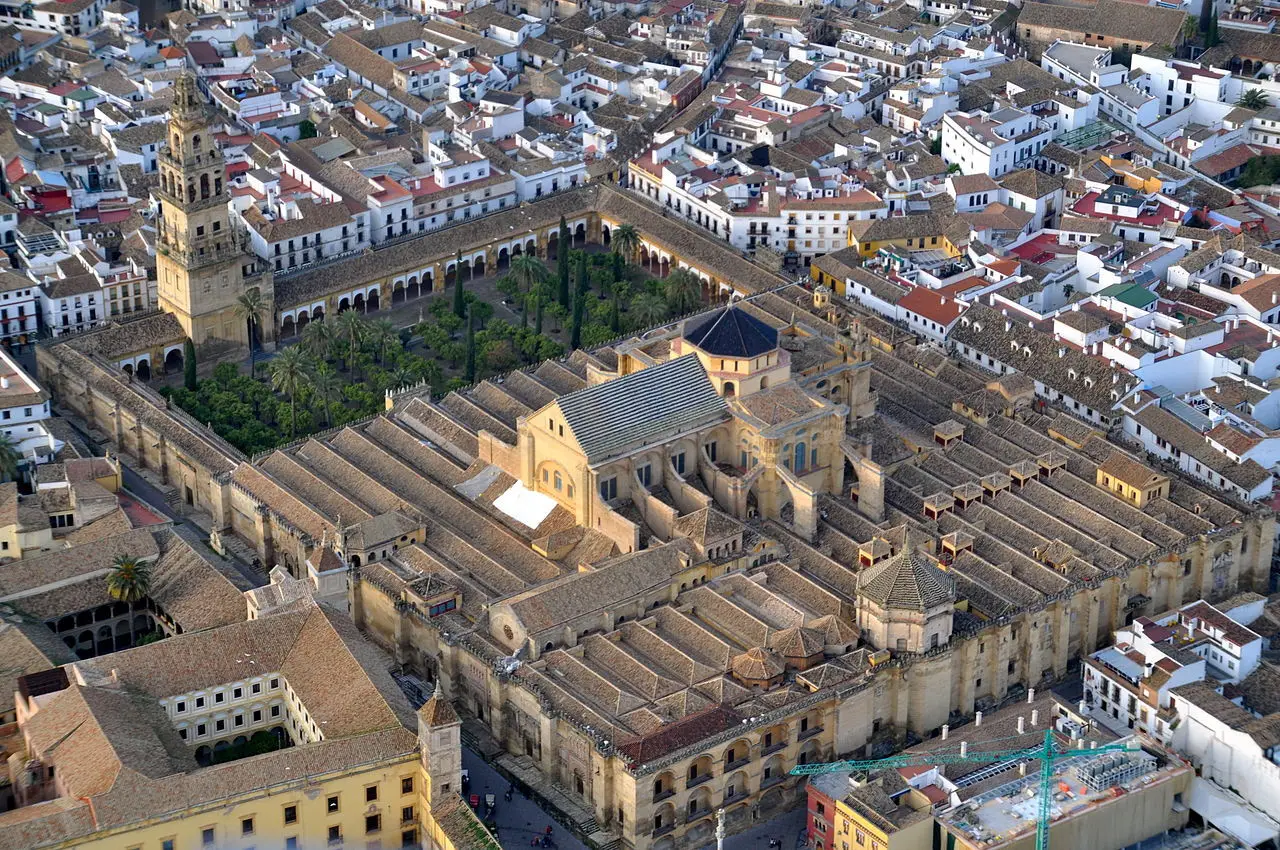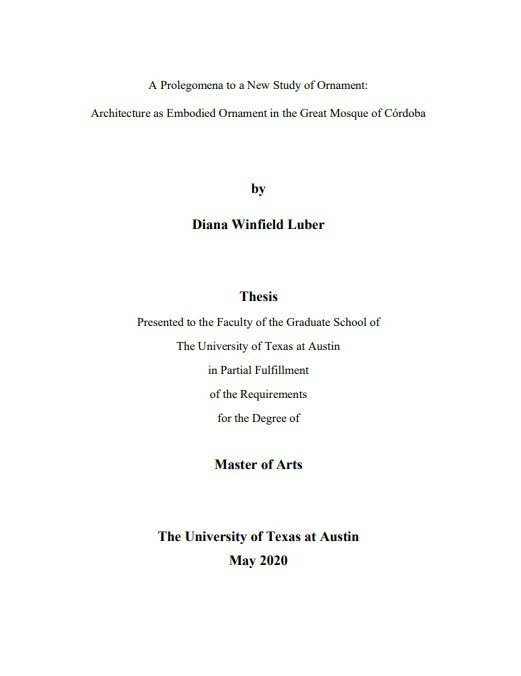

This thesis argues for a new theory of ornament as embodied. The argument for a new theory of embodied ornament responds to and rejects canonical notions of ornament as an applied, decorative skin. Rather, it argues for an embodied ornament that is inextricable from the structure and subjectivity of an object. The thesis engages with the canon of literature around ornament, focusing largely on its interpretation and role in Islamic contexts. Further, it integrates new approaches to understanding Islamic art that emphasize perception, ambiguity, and allusion. The application of these new approaches to a reading of ornament opens new avenues of inquiry and interpretive potential. The case study for this new theory of ornament is the Great Mosque of Córdoba, which was founded in AD 786 in al-Andalus (modern day Spain) by the Umayyad amir ‘Abd alRahman I. The horseshoe arch, with its alternating red and white voussoirs, is the elemental form of the embodied architectural program. The combination of the potential for infinite repetition of the arch with the constraint of its own form combine to create an ornamental program that is embodied in the structure of the mosque itself.
Luber, D., W., ‘A Prolegomena to a New Study of Ornament: Architecture as Embodied Ornament in the Great Mosque of Córdoba’ (Unpublished Master Thesis: The University of Texas, 2020).
I agree to the terms outlined below:
You agree to upload and assign Mosqpedia Database the rights to use the content worldwide and in perpetuity across all current and future media platforms. Mosqpedia Database may edit, copy, adapt and translate your contribution.
The content will be distributed under the Creative Commons Attribution-Deed – Attribution-NonCommercial-NoDerivatives 4.0 International – Creative Commons
All data will be stored in line with data protection regulations.